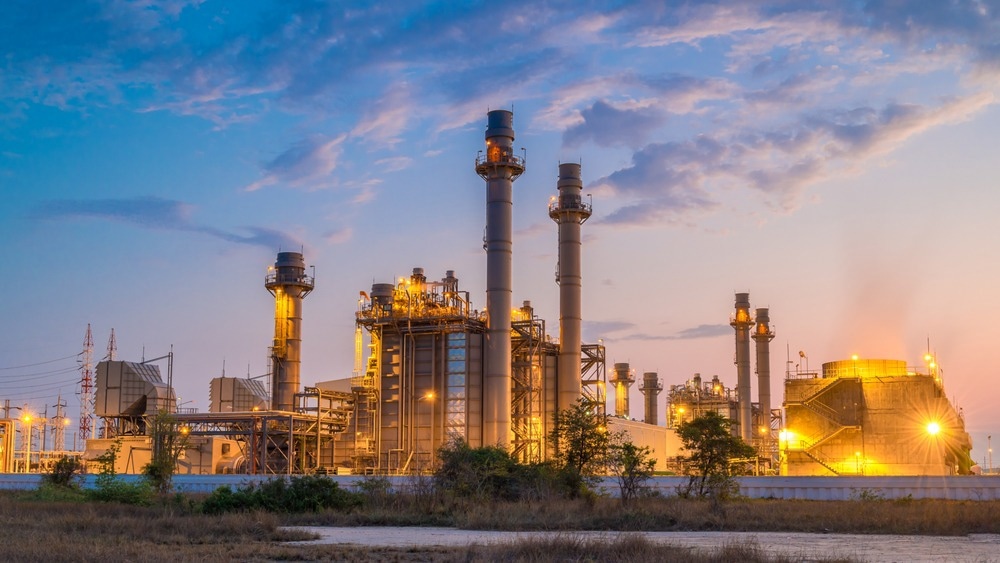Thermoelectric oxide ceramics have emerged as a promising solution for waste heat recovery and clean energy generation. By harnessing the heat generated from sources like power plants, these ceramics can power thermoelectric generators, reducing harmful emissions and contributing to the goal of net-zero emissions.

Image Credit: Ha-nu-man/Shutterstock.com
However, the efficiency of polycrystalline oxide ceramics has been a longstanding challenge. A recent study in the journal Renewable and Sustainable Energy Reviews addresses this issue by creating a new oxide ceramic that improves the performance of thermoelectric generators, offering a path toward a more sustainable future.
Thermoelectric (TE) Power Generators for Revolutionizing Waste Heat Recovery
The shift towards renewable energy sources and clean energy generation has become increasingly crucial in recent years due to the pressing need to reduce our carbon footprint and combat climate change. Utilizing thermoelectric power generators for waste heat recovery is a promising solution in this regard.
By converting temperature gradients into electricity, these devices can generate power without producing any additional greenhouse gas emissions, making them a sustainable and environmentally friendly way to generate power.
One of the significant advantages of thermoelectric devices is that they have no moving parts and operate silently, making them low-maintenance and durable.
Industries that produce iron/steel and non-metallic minerals, for instance, generate waste heat at high temperatures, as high as 1273 K, making them ideal candidates for TE applications. Similarly, power generation and thermal power plants have waste heat conversion efficiencies of up to 60% and 24%, respectively, indicating the substantial potential for waste heat recovery.
Oxide Ceramics: Importance and Limitations for TE Applications
Thermoelectric generators (TEGs) are devices that can convert waste heat into electricity, and oxide ceramics are a promising material for this purpose. Oxide ceramics are made up of various metallic elements and are highly resistant to heat and corrosion, making them suitable for high-temperature applications in the air.
They have a hard structure and are commonly used for making products like pottery, porcelain, clay bricks, and cement. However, when it comes to large-scale TEG applications, engineers face difficulties due to the polycrystalline structure of oxide ceramics.
The polycrystalline structure of oxide ceramics, which comprises several connected crystals, forms grain boundaries. These boundaries impede the flow of current and electrons that power thermoelectric generators, making oxide ceramics ineffective in converting energy. As a result, the lack of efficiency of oxide ceramics has become a major obstacle in the development of TE devices that are highly in demand.
What Did the Researchers Do?
In this study, the researchers utilized a cutting-edge approach to manipulate the crystal structure of oxide ceramics on an atomic scale. By carefully controlling the crystal structure of the polycrystalline material, they were able to create a densely packed, textured material that outperformed single-crystal materials that are currently considered the standard.
To improve the performance of the polycrystalline oxide ceramics further, the researchers introduced dopants, which are metal ions, into the material intentionally.
These dopants were used to segregate special types of dopants to the grain boundaries of the material. By doing so, the researchers were able to transform the grain boundaries, which are usually detrimental to the thermoelectric performance of the material, into pathways that conduct electricity.
By utilizing this approach, researchers can improve the performance of oxide ceramics beyond that of single crystals, which is essential for the continued advancement of thermoelectric devices.
Key Findings
Using grain boundary engineering and dopant segregation, this work revealed important nanostructure engineering techniques required to increase the Seebeck coefficient of oxide ceramics. The experimental results confirm that the performance of oxide ceramics can be significantly enhanced by engineering the grain boundaries and utilizing dopants that segregate to these boundaries.
The study also provides insight into the atomic structure origin of dopant segregation and indicates that oversized dopants are the driving force behind this phenomenon, with coulombic interactions playing a negligible role. This new understanding of the dopant segregation mechanism will enable researchers to further optimize the performance of oxide ceramics by selecting appropriate dopants for specific applications.
This study's effectiveness in increasing the performance of oxide ceramics via grain boundary engineering and dopant segregation opens up new avenues for the rational design and practical production of innovative ceramics for potential electrical and power applications.
“This work is at the cusp for large-scale, high-temperature waste heat recovery,” said Xueyan Song, a co-author of the study. “It leads toward a new era for oxide ceramics and aligns with the U.S. Department of Energy’s Industrial Heat Shot initiative to develop cost-competitive industrial heat decarbonization technologies with at least 85% lower greenhouse gas emissions by 2035. Our findings could facilitate and accelerate materials design that is magnitudes higher than the current state of the art.”
Reference
Romo-De-La-Cruz, C.-O. et al. (2023). Entering new era of thermoelectric oxide ceramics with high power factor through designing grain boundaries. Renewable and Sustainable Energy Reviews. Available at: https://doi.org/10.1016/j.rser.2023.113186
Disclaimer: The views expressed here are those of the author expressed in their private capacity and do not necessarily represent the views of AZoM.com Limited T/A AZoNetwork the owner and operator of this website. This disclaimer forms part of the Terms and conditions of use of this website.